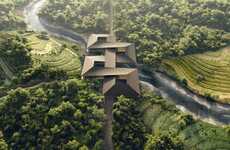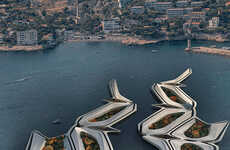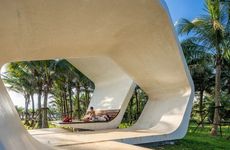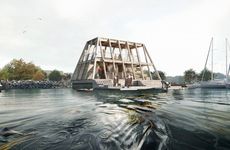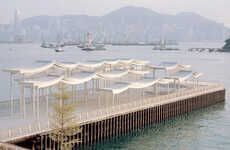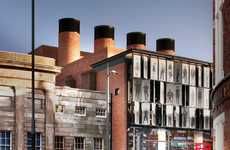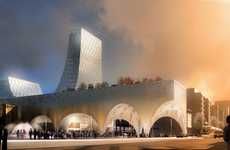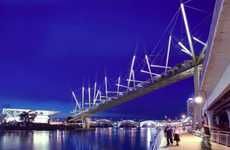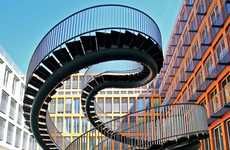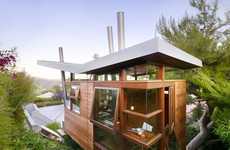
Drifting Horizons is Sensitive to the Stir of the River Thames
Amelia Roblin — September 5, 2011 — Eco
References: suckerpunchdaily
Fixed links are man's way of asserting authority over the unpredictable fluctuations of nature, but this project called Drifting Horizons strives to work with the environment and experience its every ebb and flow.
Designers Mark Shkolnikov and Tia Crocker from London and Pennsylvania collaborated on this compelling concept. Through their studies of the Tidal North Sea and its incredible effect on the mouth of the River Thames, they came up with an infrastructural solution that could cooperate with a water level that typically rises 20 feet each day. A cluster of floating rafts extend from both banks and are joined by a shifting bridge that spans just a third of the full width of the waterway.
If only more architectural and urban design initiatives explored such sensitive and dynamic ideas as Drifting Horizons does.
Designers Mark Shkolnikov and Tia Crocker from London and Pennsylvania collaborated on this compelling concept. Through their studies of the Tidal North Sea and its incredible effect on the mouth of the River Thames, they came up with an infrastructural solution that could cooperate with a water level that typically rises 20 feet each day. A cluster of floating rafts extend from both banks and are joined by a shifting bridge that spans just a third of the full width of the waterway.
If only more architectural and urban design initiatives explored such sensitive and dynamic ideas as Drifting Horizons does.
Trend Themes
1. Ephemeral Architecture - Drifting Horizons exemplifies the trend of creating temporary and adaptable structures that work in harmony with the environment.
2. Responsive Infrastructure - The concept of Drifting Horizons demonstrates the trend of designing infrastructure that can adapt to the changing conditions of its surrounding natural elements.
3. Sustainable Urban Design - Drifting Horizons aligns with the trend of incorporating sustainability principles into urban design by utilizing the natural characteristics of the River Thames.
Industry Implications
1. Architecture - The architectural industry can explore disruptive innovation opportunities by designing more adaptable, sensitive, and eco-friendly structures like Drifting Horizons.
2. Urban Planning - In the field of urban planning, there are opportunities for disruptive innovation by incorporating responsive infrastructure concepts such as floating rafts and shifting bridges into future projects.
3. Environmental Engineering - Drifting Horizons presents an opportunity for disruptive innovation in the field of environmental engineering by developing sustainable solutions that can withstand and adapt to natural fluctuations like tidal rises.
2.3
Score
Popularity
Activity
Freshness




